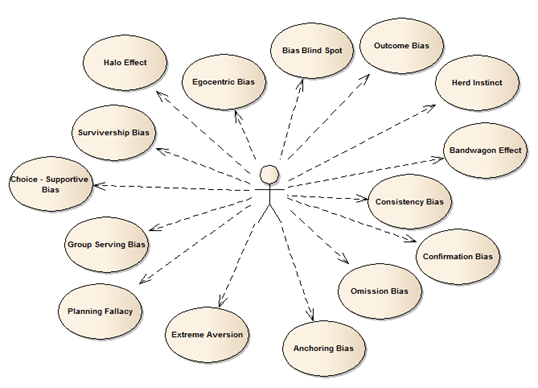Future project managers will work on a virtual basis that enables them to better focus on what matters as well as to monitor and control operational risks mindfully. The picture below shall illustrate the business-related processes behind a financial instrument (for instance, as used by hedge funds). I have created the picture years ago, but since then the processes around the management of a hedge fund have not changed. However, the possibilities of how their clients monitor their investments have changed with the advance in technology.
Not only hedge fund businesses changed their interaction with clients, this change took place in the interaction model of many organizations and their clients. Today, visiting a bank branch became a nostalgic experience for most of their clients and the speculation is whether branches will completely disappear one day. One reason for the disappearance might be the change in client behaviors and the reduction of costs, but can the same reasons also cause a change in the way of how projects are managed?
As senior project managers we learned that what matters is to avoid conflicts and the successful completion of our projects. Why can't we monitor and control our projects remotely and choose to be on-site with our project team when we think it would benefit our projects? We have virtual solutions available to simplify our job, but we still run projects like in the past and have to track and solve issues with old methodologies without taking the advance of technologies into account.
Should we wait until PMP guidelines include a chapter with instructions on how to manage a project virtually? A project usually implements something new in an organization and can therefore be seen as an innovation. However, the way how we manage innovations is based on outmoded project management knowledge and the process does not apply new IT solutions, such as the use of virtual communication. Can we innovate while innovating?
Why is it so hard to find a good balance between needed regulation and over-regulation and a focus on becoming more efficient, transparent and productive? It seems that a change in interaction with each other took place at many levels of life, but this change did not fully take place in our work place. The reason might be because of some known or unknown human biases or due to traditional work cultures. Fact is that there is still an inhomogeneity among the cultures regarding the use of state-of-the-art technology at work and in our spare time. Is this one of the reasons for the slow recovery after the financial crisis? It is not new that our work can be affected by a number of biases, and due to that we are not able to innovate at a higher rate. Thinking patterns determine the way how we make decisions; therefore we need to incorporate new knowledge in order to be able to change our thinking patterns and innovate more successfully. The picture below illustrates some of our biases which create hidden risks in day-to-day business:
No matter which bias causes which kind of risk, we need to find a way to naturally avoid it. One way would be to introduce Arianna Huffington's third matrix to banking or to value mindfulness at work. Another way would be to combine inter-disciplinary knowledge with what we already know, which I have tried to demonstrate in my book "Banks of the Future". Managing a group of people remotely might not be suitable for all projects or all project leaders, but with the availability of today's technology the possibility to choose should be given to project managers.
Risks in a project can be monitored and controlled via the collected facts and information, but also based on our gut feelings about the situation. Being able to decide where we work while monitoring and controlling the progress of our projects will help us to stay connected with our intuitions and the wisdom inside ourselves. Here are some of the benefits for introducing virtual project leaders to banking:
-A better focus on the monitoring and controlling of the ongoing milestone
-Avoidance of getting stuck in day-to-day business or internal politics outside of the project
-A better focus on the scope, the management of change requests and the reduction of costs
-Ease of communication among international project team members; making different locations or time zones your advantage to increase efficiency
-The creation of a state-of-the-art way of leading your team members by assigning clear responsibilities and space when monitoring them virtually
-Listening to one's gut feelings and the value of respectful interaction in your team
It is a fact that our economy needs banks to start growing more strongly which is the reason why innovations are so essential. In 2016, budgets for projects in financial institutions like insurance companies, hedge funds, asset managers, investment banks, private banks, wealth management, etc. will be pretty much identical to the past year, and if an institution expects more growth, it will be even higher. The main question is when are they going to see virtual project managers as a needed innovation to increase productivity and reduce hidden risks & costs? You are welcome to send your questions, thoughts or ideas to us: SendEmail


